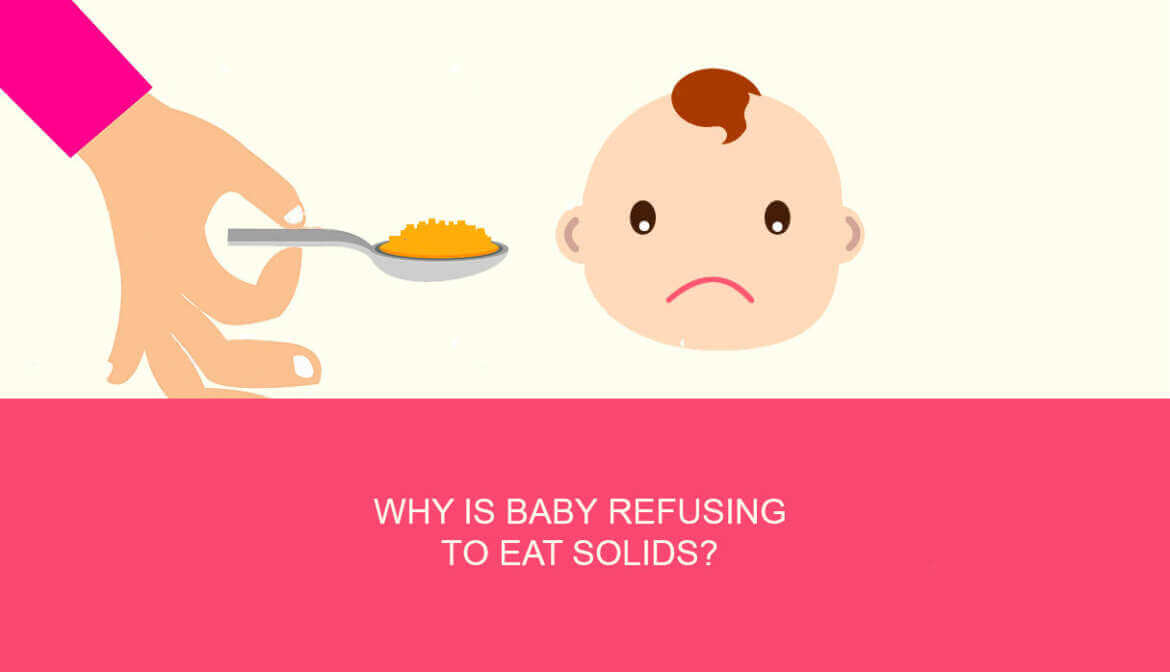Introducing solid foods is an exciting milestone in a baby’s journey, but what happens when your little one resists eating solid foods? Many parents find themselves faced with a baby who refuses to eat or struggles with chunkier textures, it can start around 10 months. Understanding the reasons behind this reluctance and implementing appropriate strategies can help ease the transition and ensure a balanced diet for your baby. In this article, we’ll explore the common reasons why babies resist eating solid foods, provide helpful tips, and offer solutions to encourage your little one to embrace a variety of textures and flavors.
Developmental factors
Babies develop at their own pace, and introducing solid foods requires specific motor skills. It’s important to remember that not all babies progress at the same rate, and some may take longer to develop the necessary skills for chewing and swallowing solid textures. If your baby seems hesitant, it could simply be a developmental factor. Give them time, continue offering different textures, and encourage exploration through play and exposure to various foods.
Sensory Sensitivity
Sensory sensitivity can play a significant role in a baby’s aversion to solid foods. Some babies are more sensitive to certain textures, tastes, or smells, making it challenging for them to accept new foods. It’s crucial to respect your baby’s sensory preferences while gently introducing new flavors and textures. Start with smoother purees and gradually increase the thickness and lumpiness to accommodate their comfort level.
Lack of Familiarity
Babies are creatures of habit, and introducing new foods can be met with resistance. If your baby has been primarily exposed to smooth purees, the introduction of lumpy textures can be overwhelming. Gradually increase the texture of their foods, allowing them to adjust at their own pace. Pairing new textures with familiar flavors can also help make the transition more appealing.
Teething Discomfort
Teething can be a challenging time for babies, and the discomfort they experience can affect their appetite for solid foods. Sore gums and increased sensitivity can make chewing uncomfortable. Offer soothing options like chilled teething rings or soft foods that require minimal chewing during teething periods.
Individual Preferences
Just like adults, babies have individual preferences when it comes to food. Some may naturally gravitate toward certain textures while showing resistance to others. Observe your baby’s reactions and preferences, and respect their choices. Offering a variety of textures and flavors can help broaden their palate over time.
It’s common for babies to resist eating solid foods at various stages of their development. Understanding the reasons behind their aversion and implementing appropriate strategies can help ease the transition. Be patient, offer a variety of textures gradually, and respect your baby’s preferences. Remember that every baby is unique, and they will develop their relationship with solid foods at their own pace. Consult with your pediatrician for personalized advice and continue to provide a nurturing and positive feeding environment. With time and persistence, your baby will gradually embrace new textures, paving the way for a diverse and nutritious diet.












Your baby may also like
My baby refuses to eat
04/26/2017Dairy products for babies: Yogurt, Petit-Suisse, Cheese… What to Give?
09/15/2016Baby food storage : Refrigerator, Freezer, equipment…
12/17/2016Fluffy pancake recipe for baby and the whole family (from 12 months)
10/06/2023At what age ‘should we’ eliminate the evening bottle for our baby?
05/06/2019What quantity of milk does a baby need per day?
08/14/2017Meat for baby: Age, Quantities, Type of meats…
10/30/2017The Equipment I Use for Preparing Baby Meals
08/20/2016